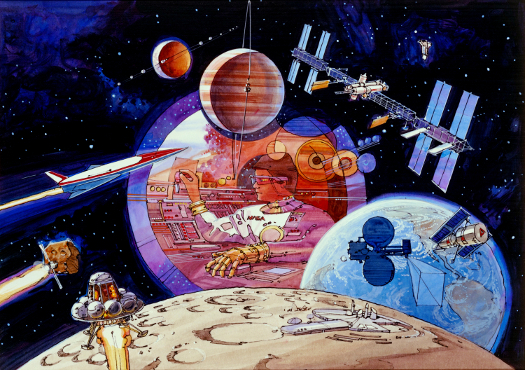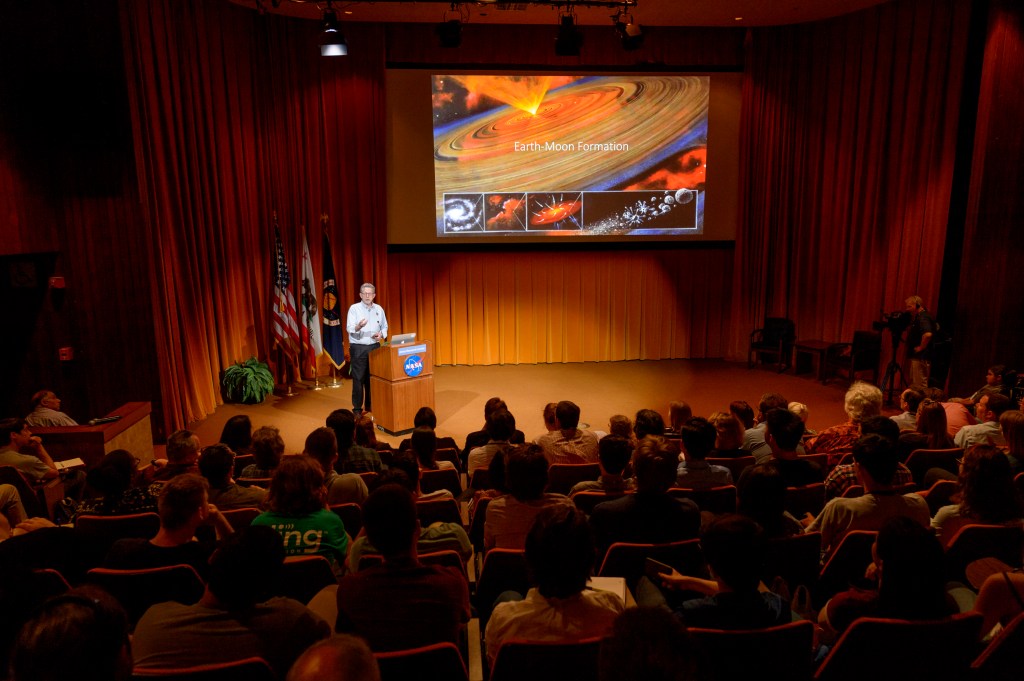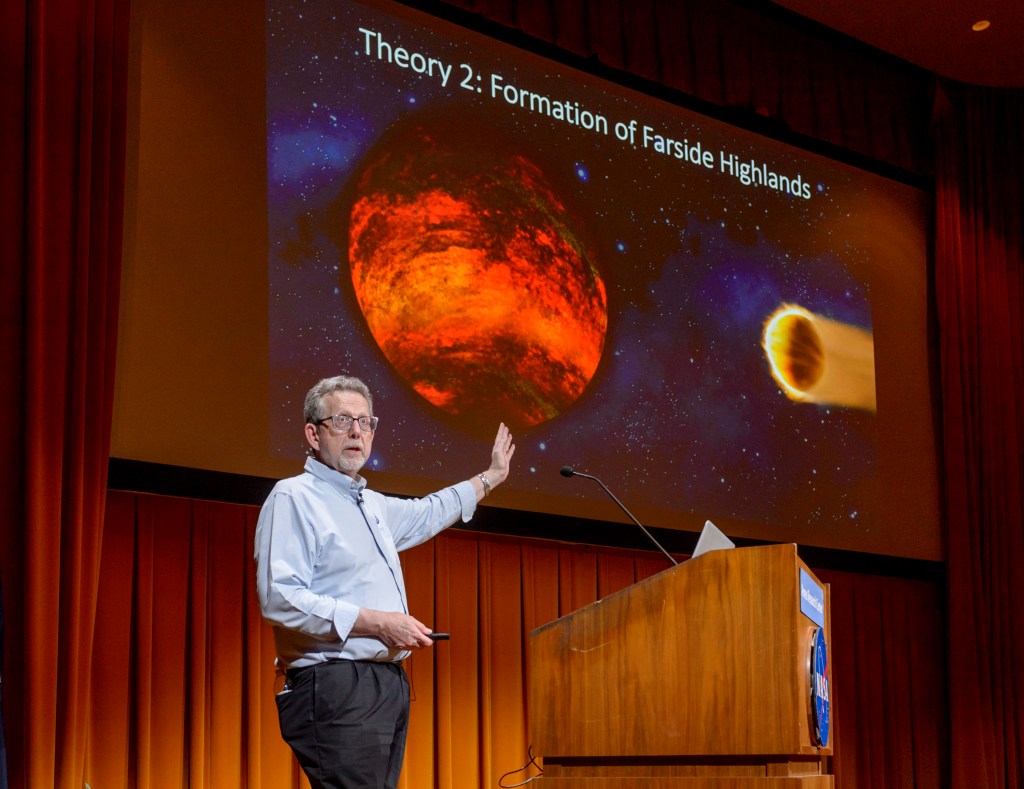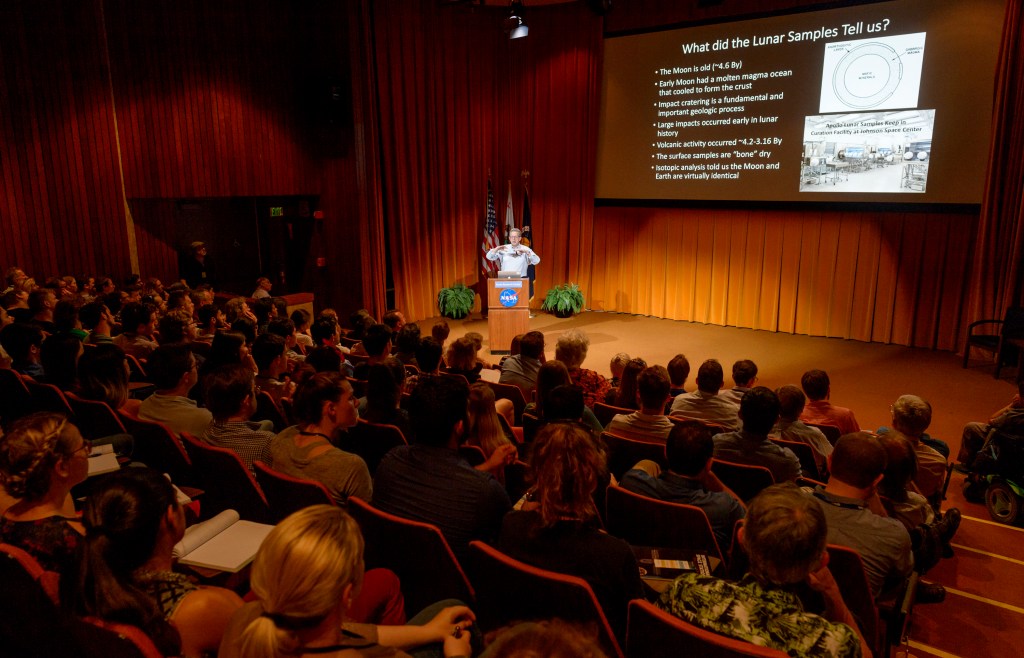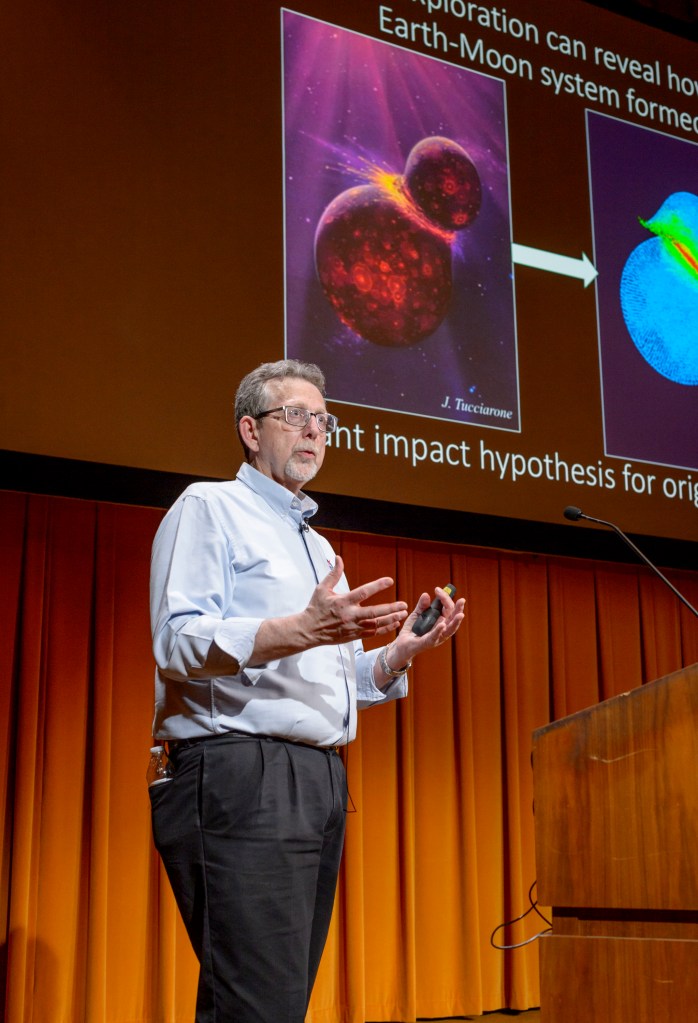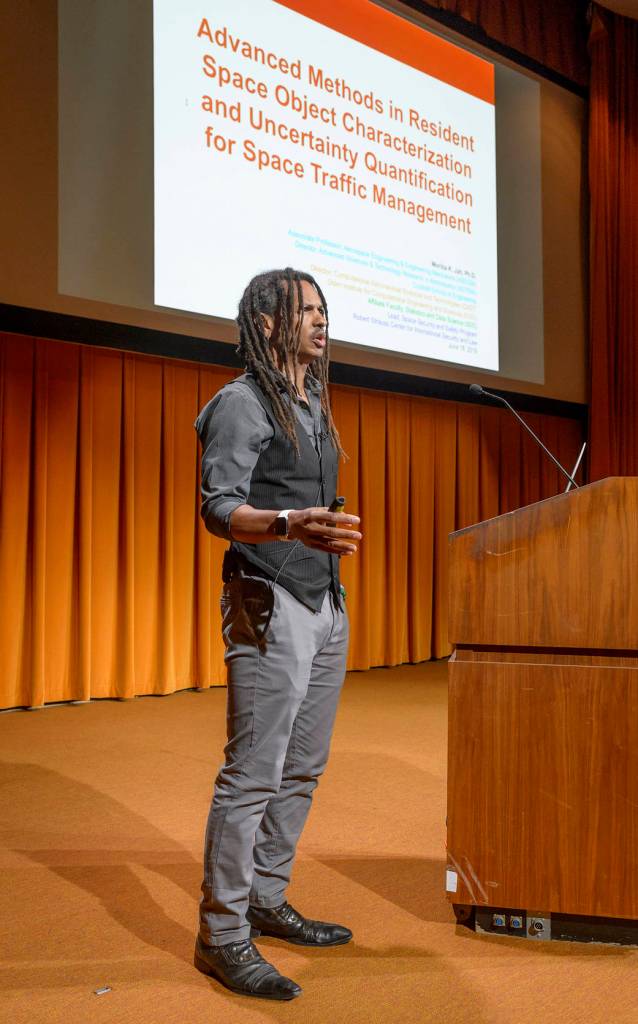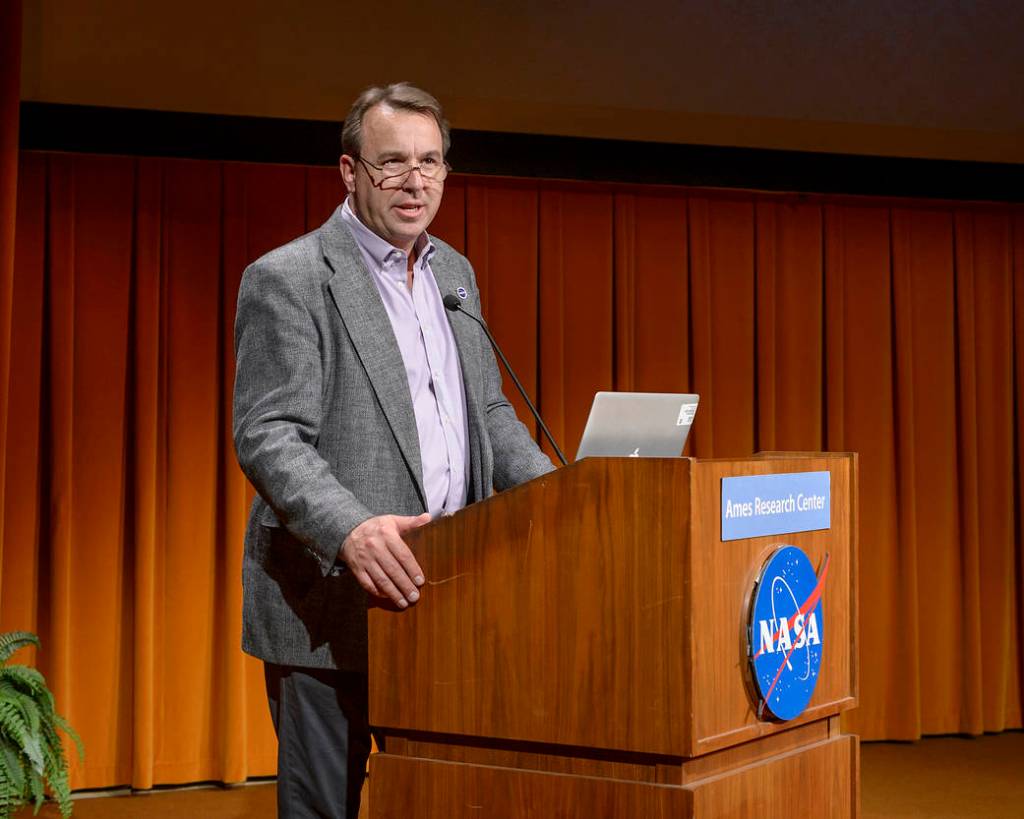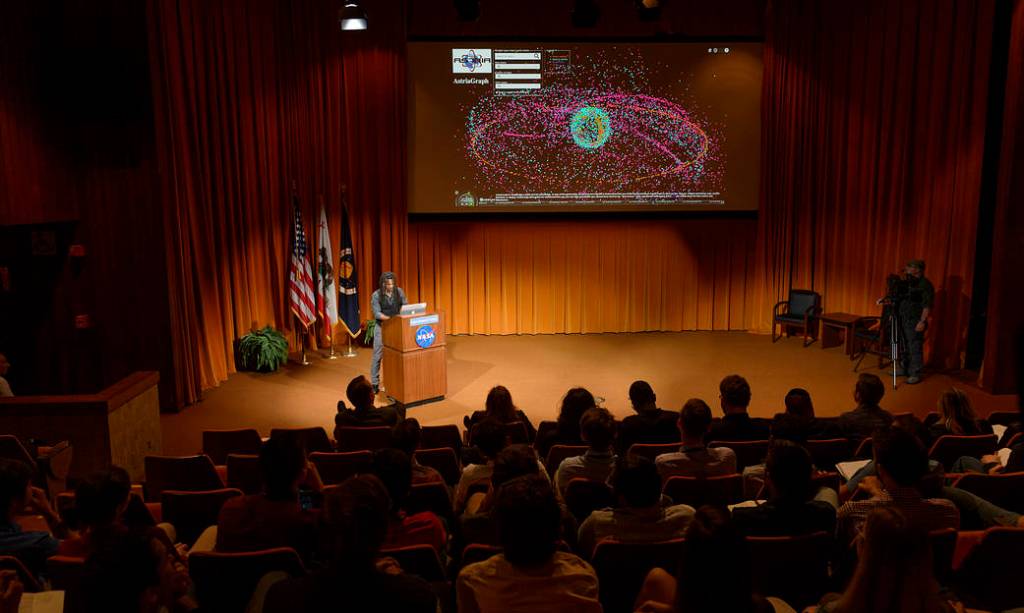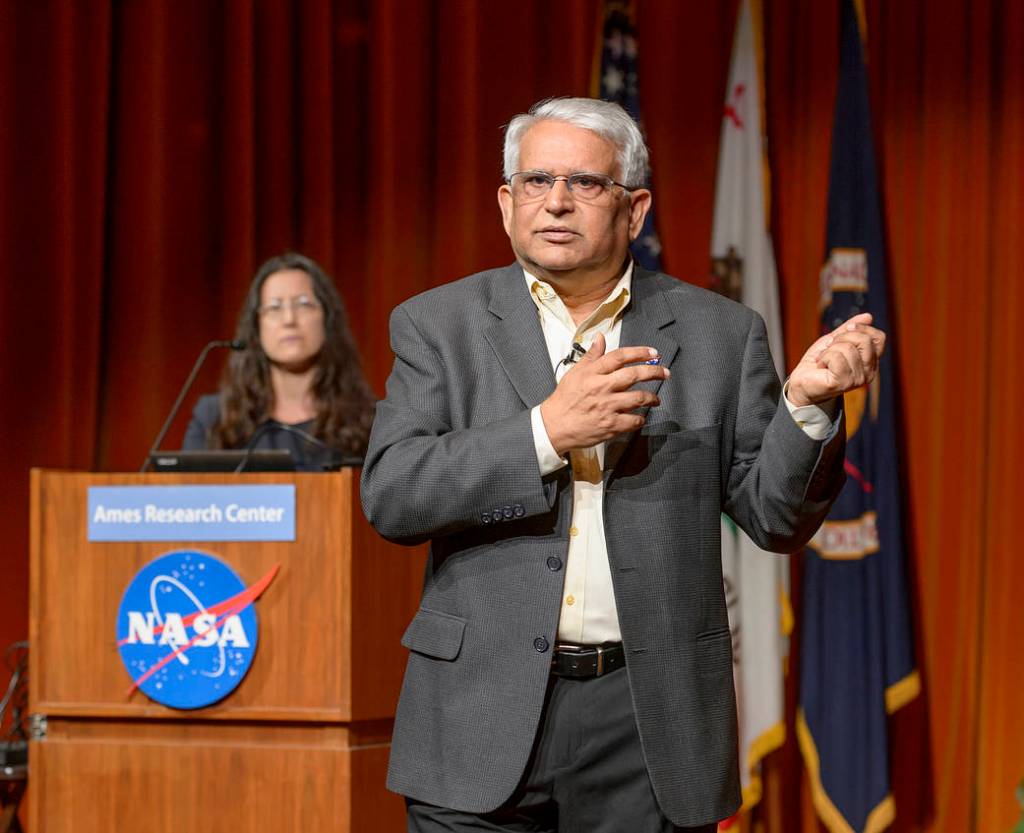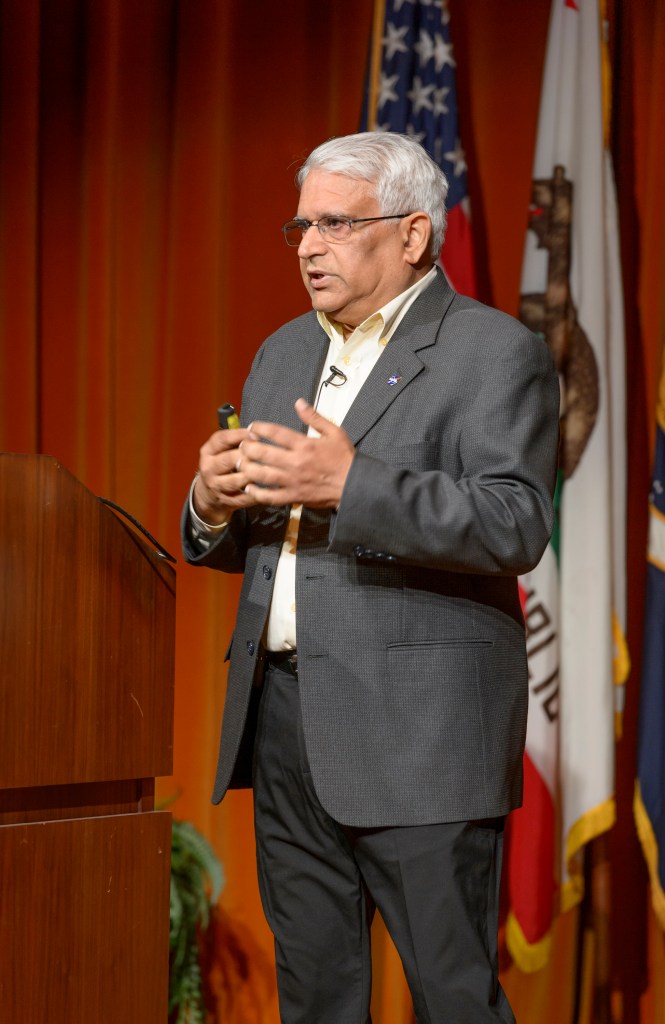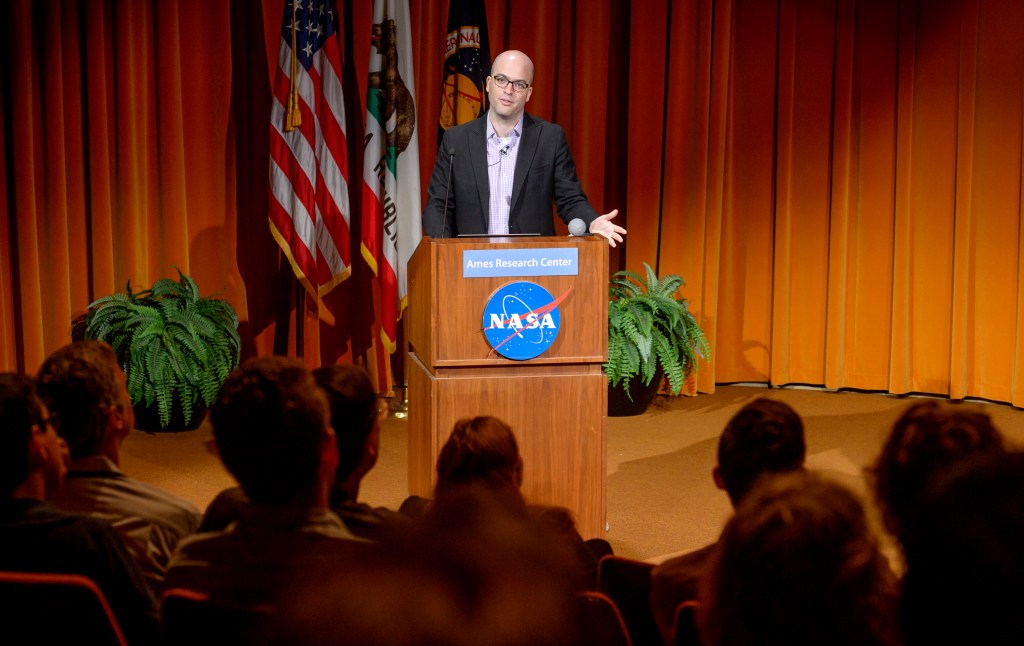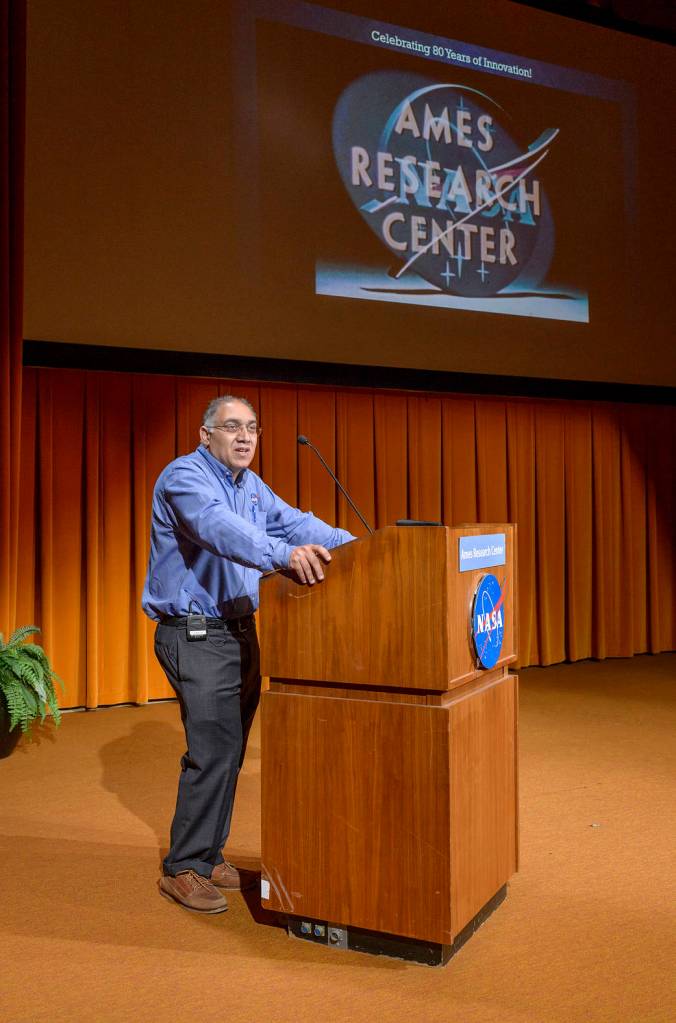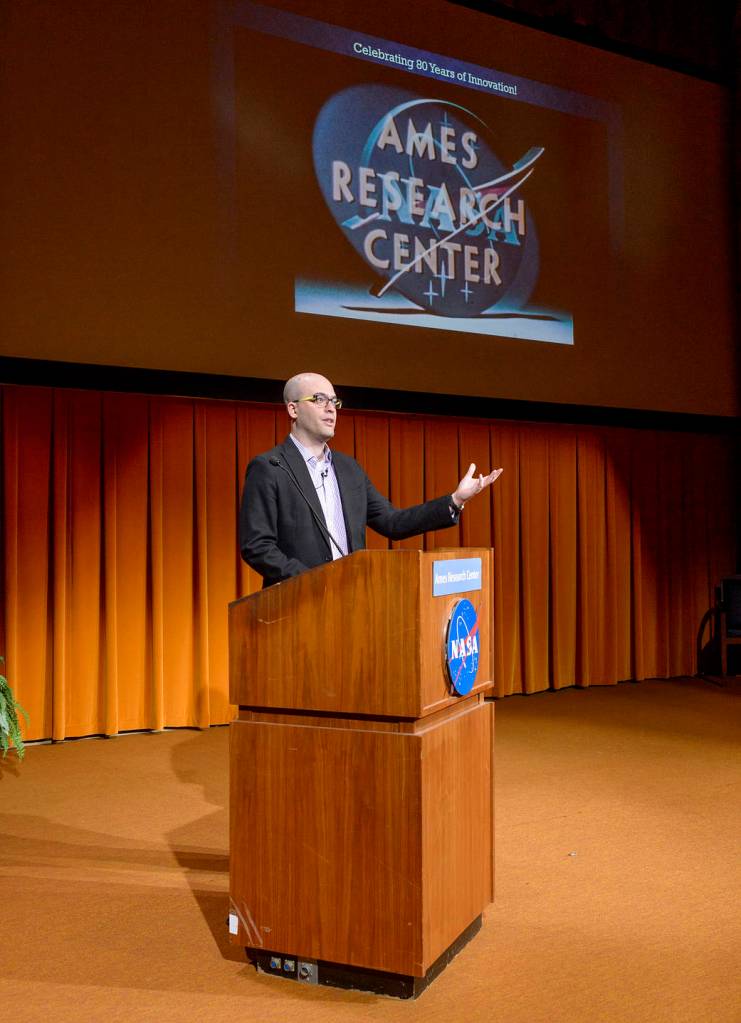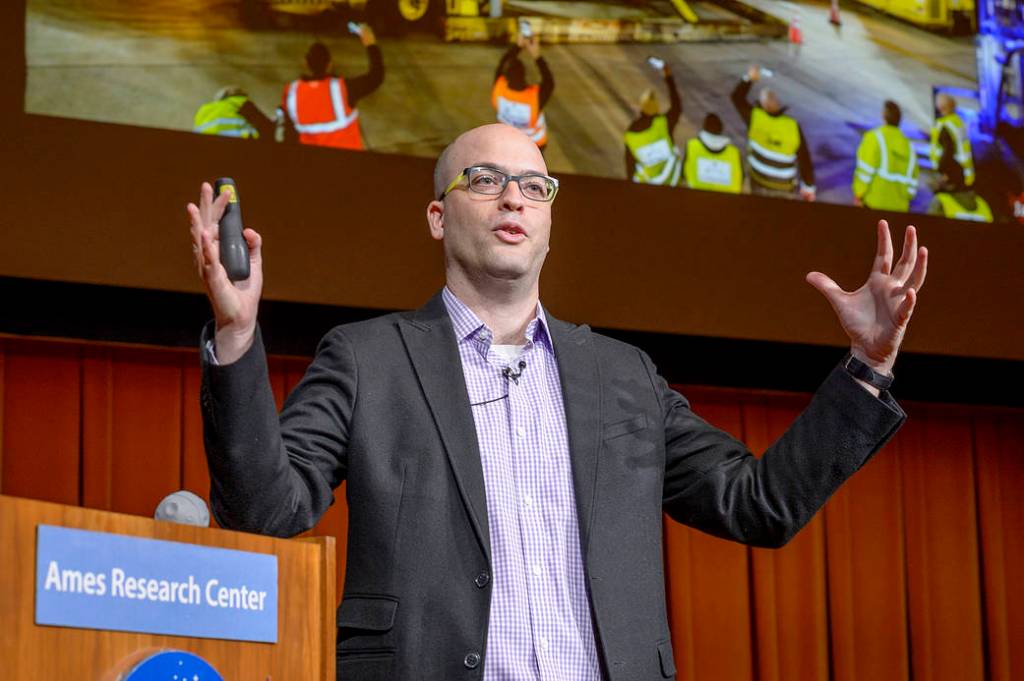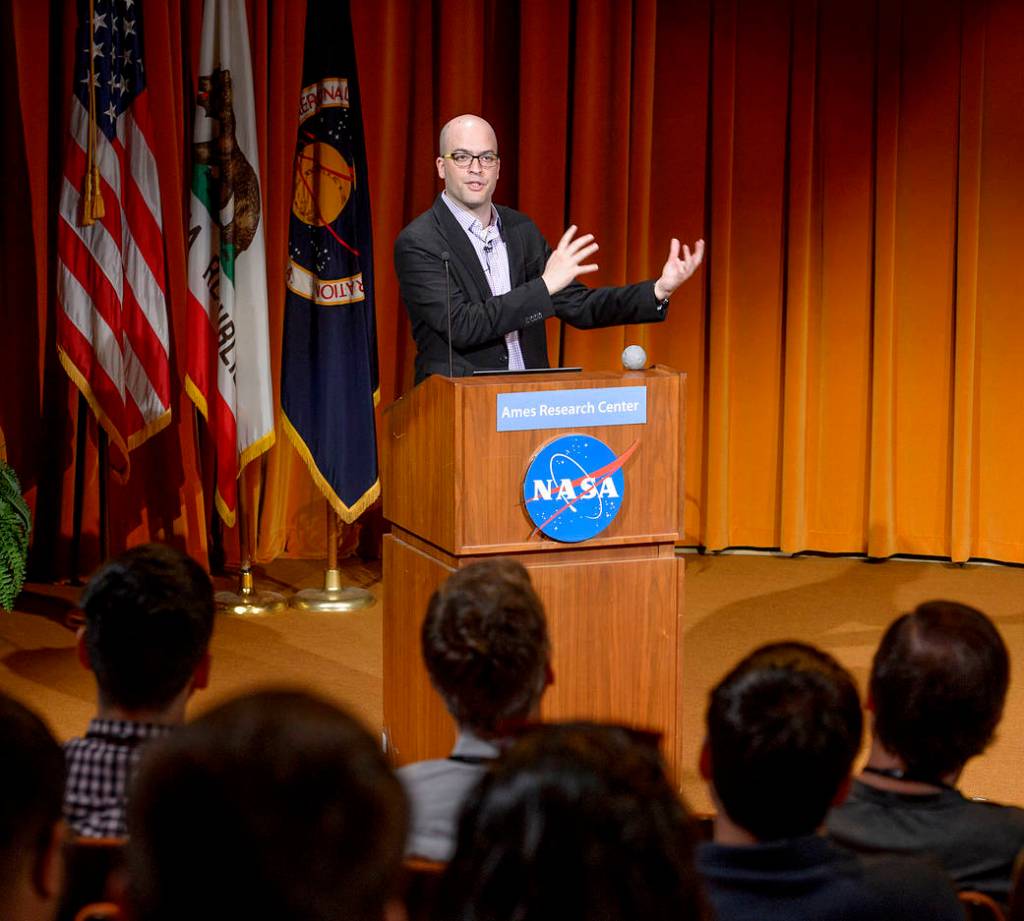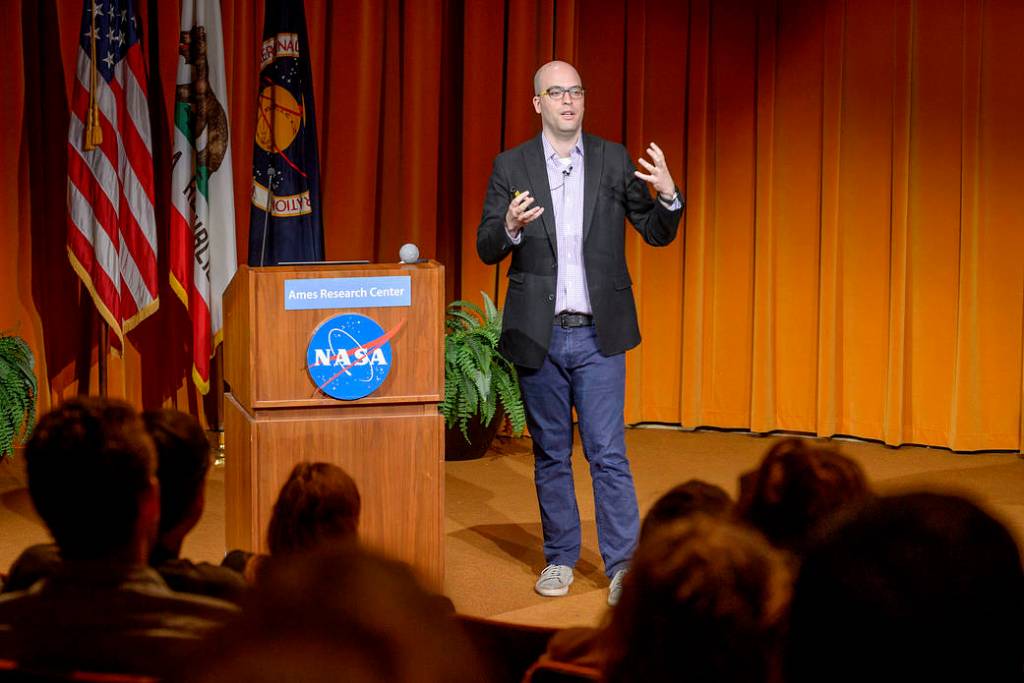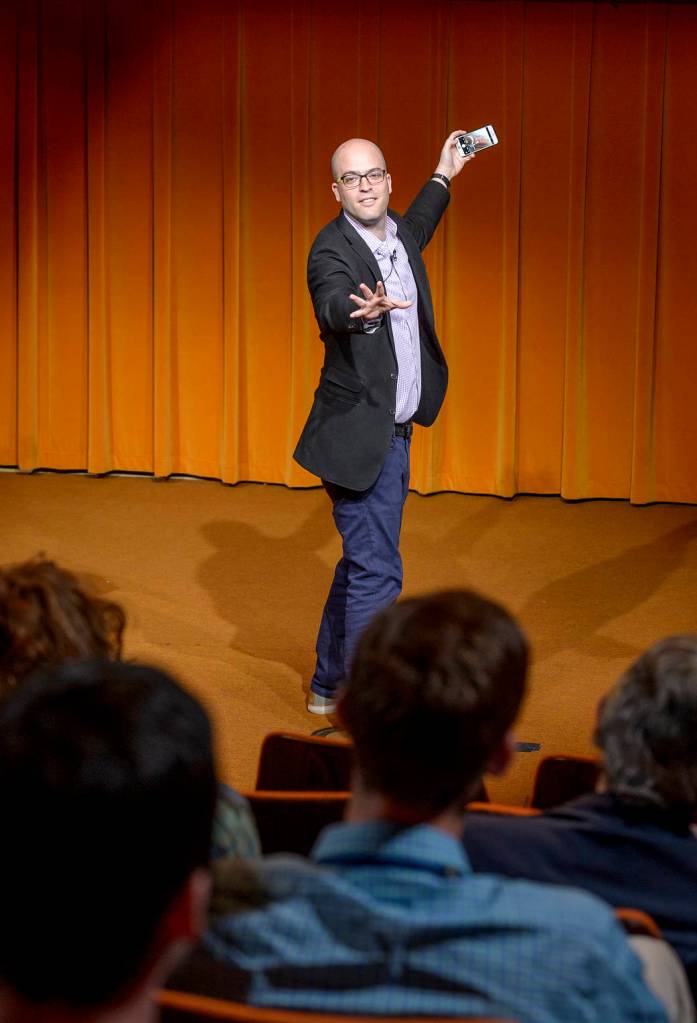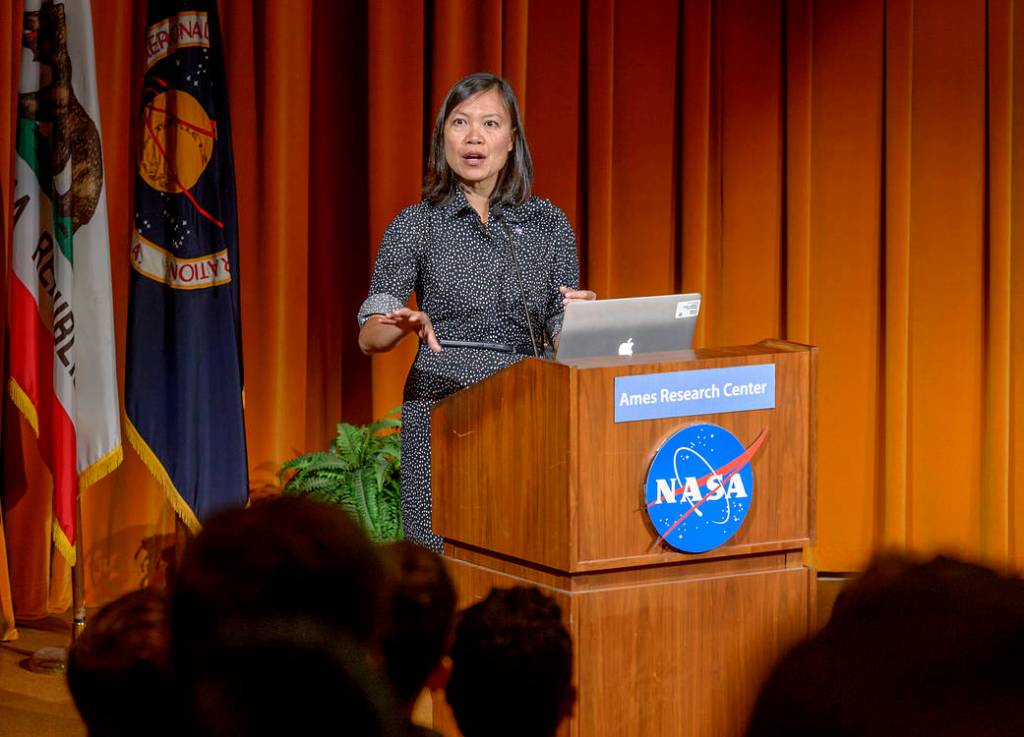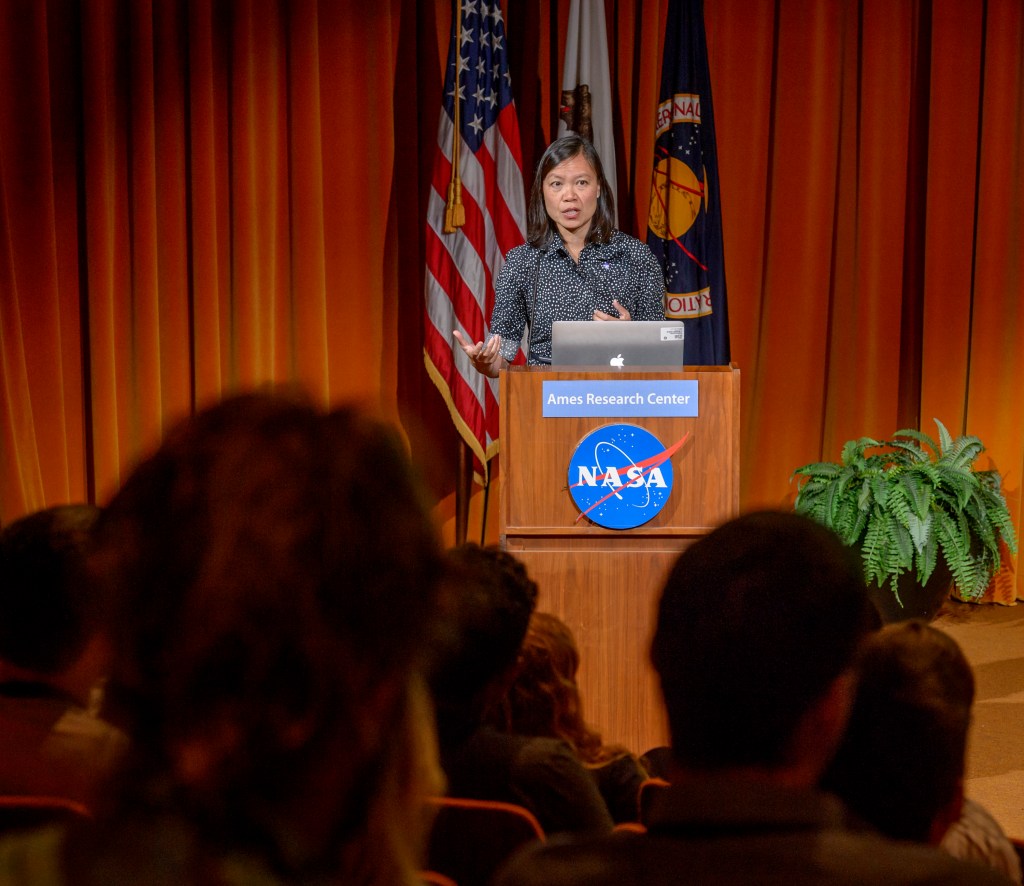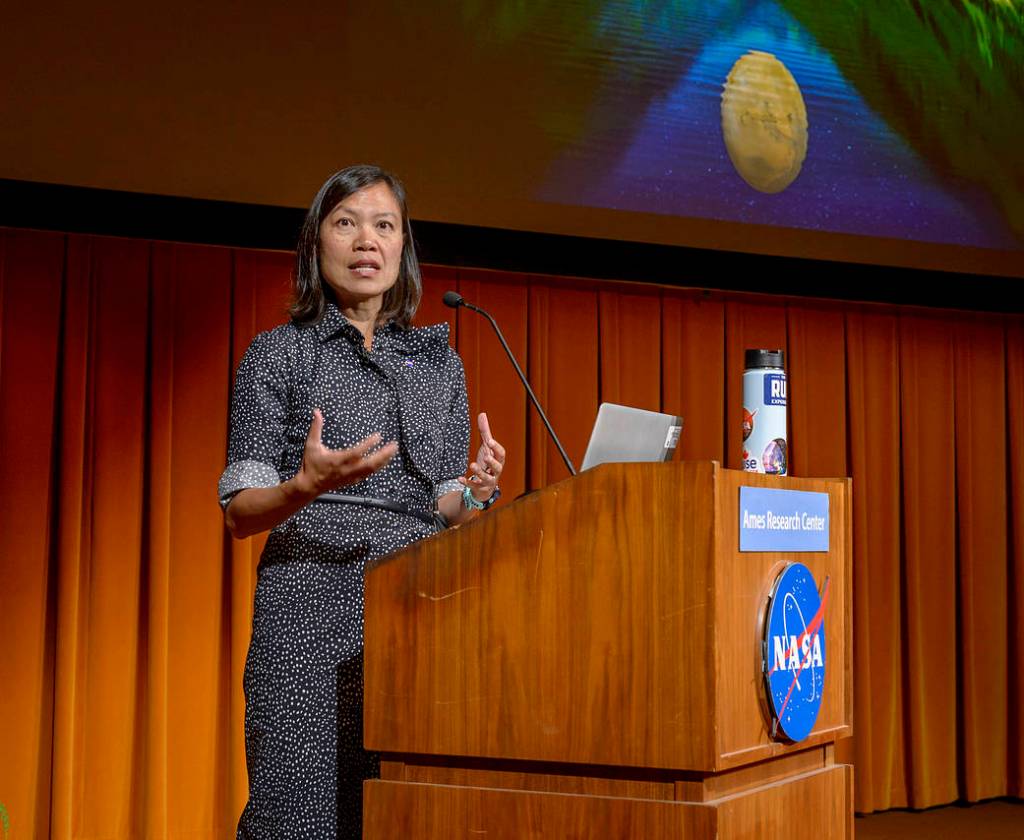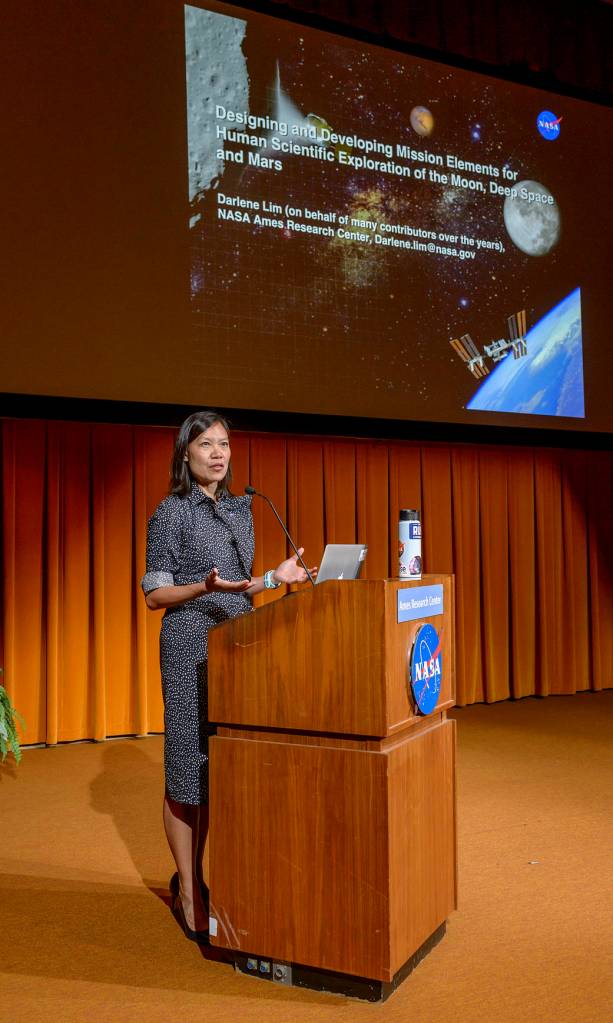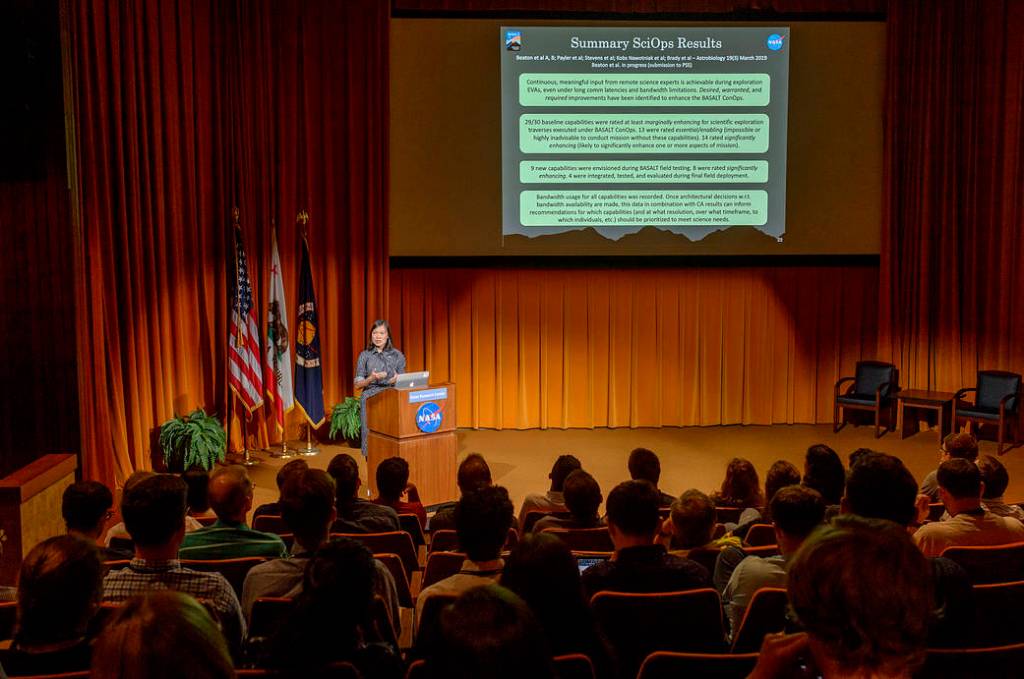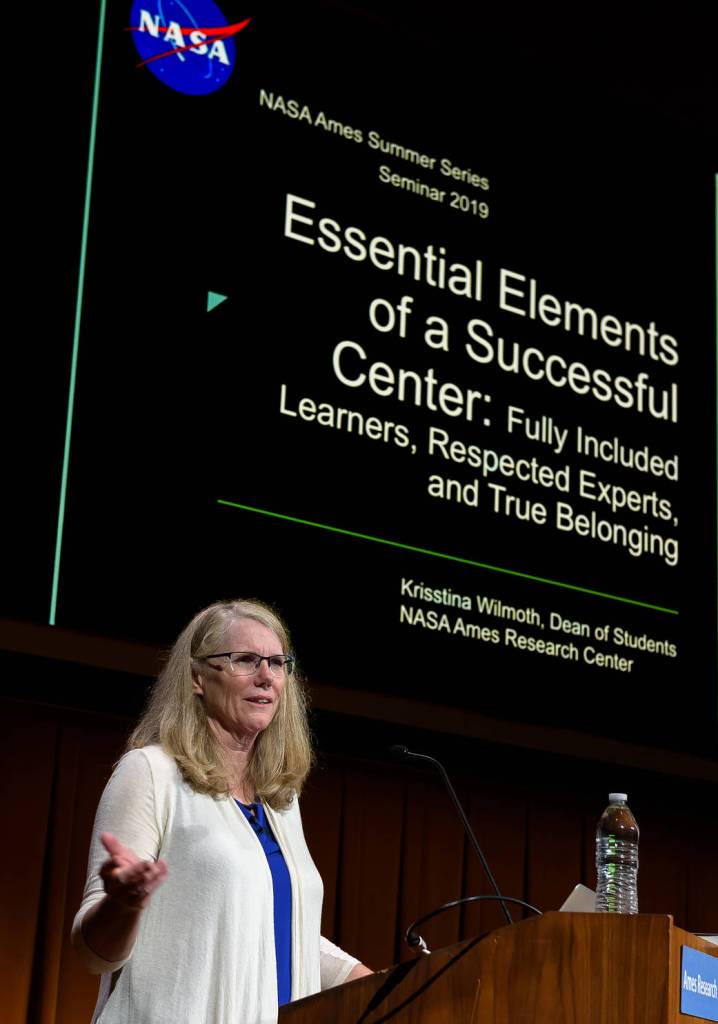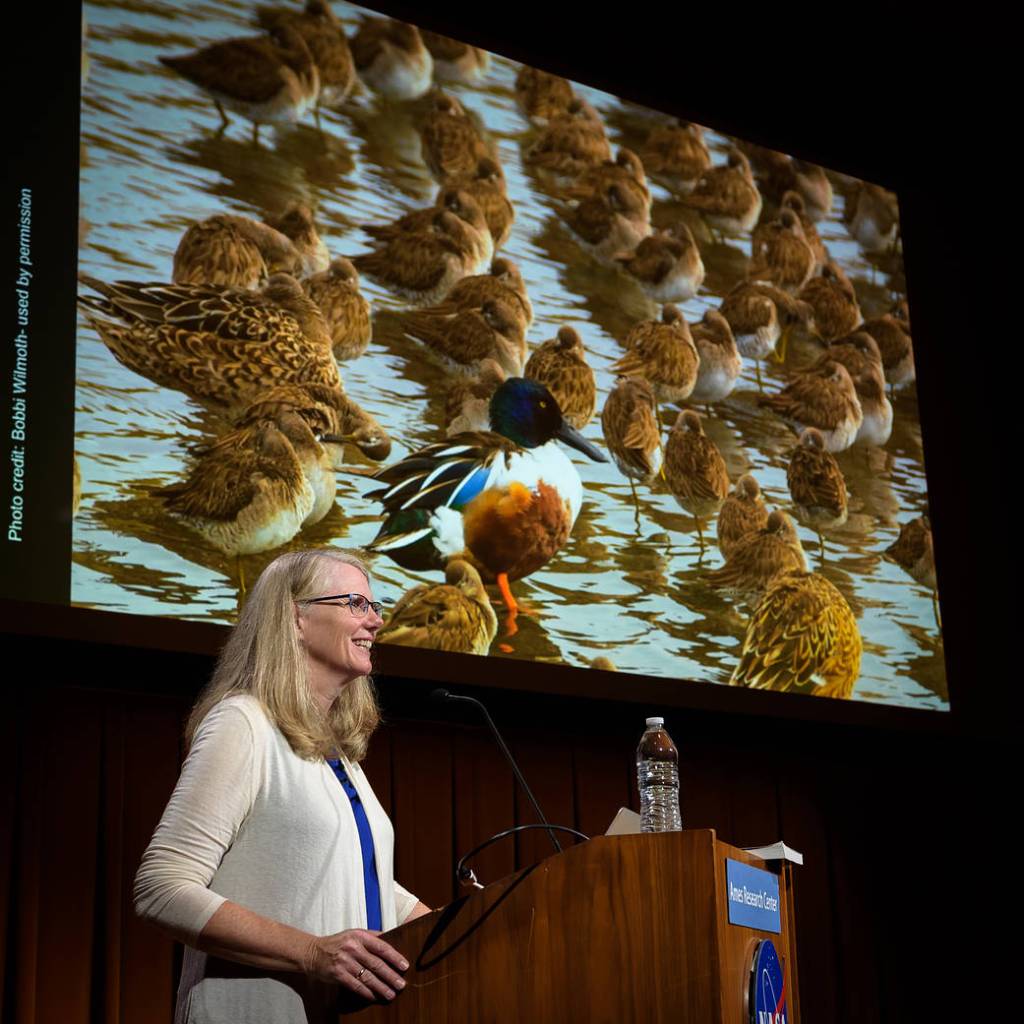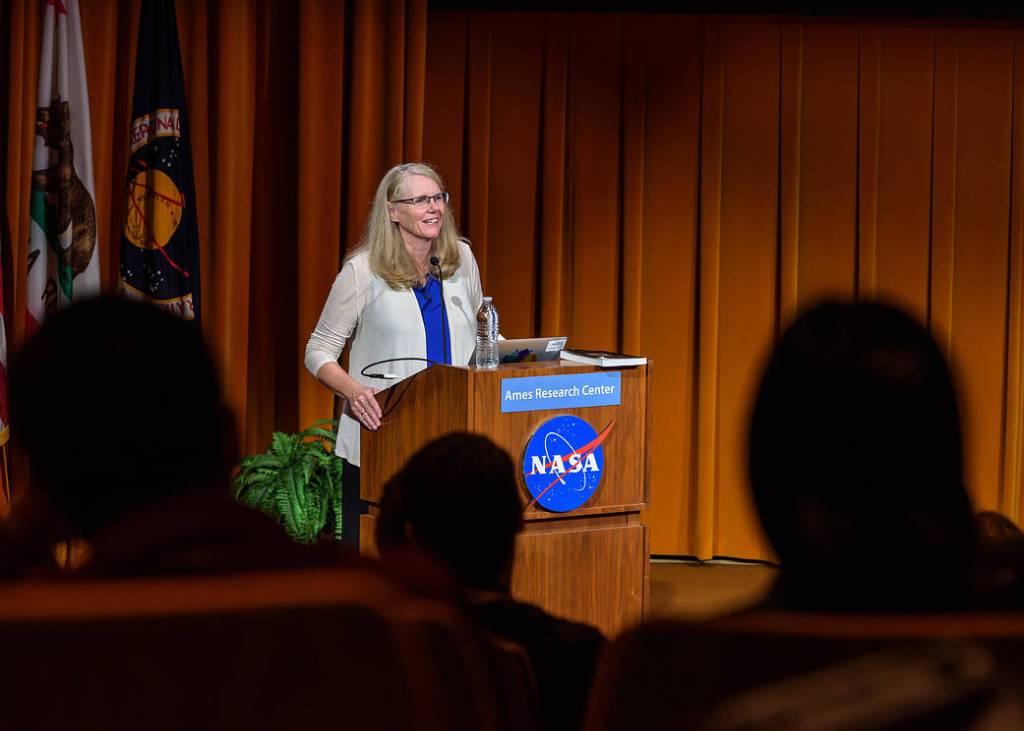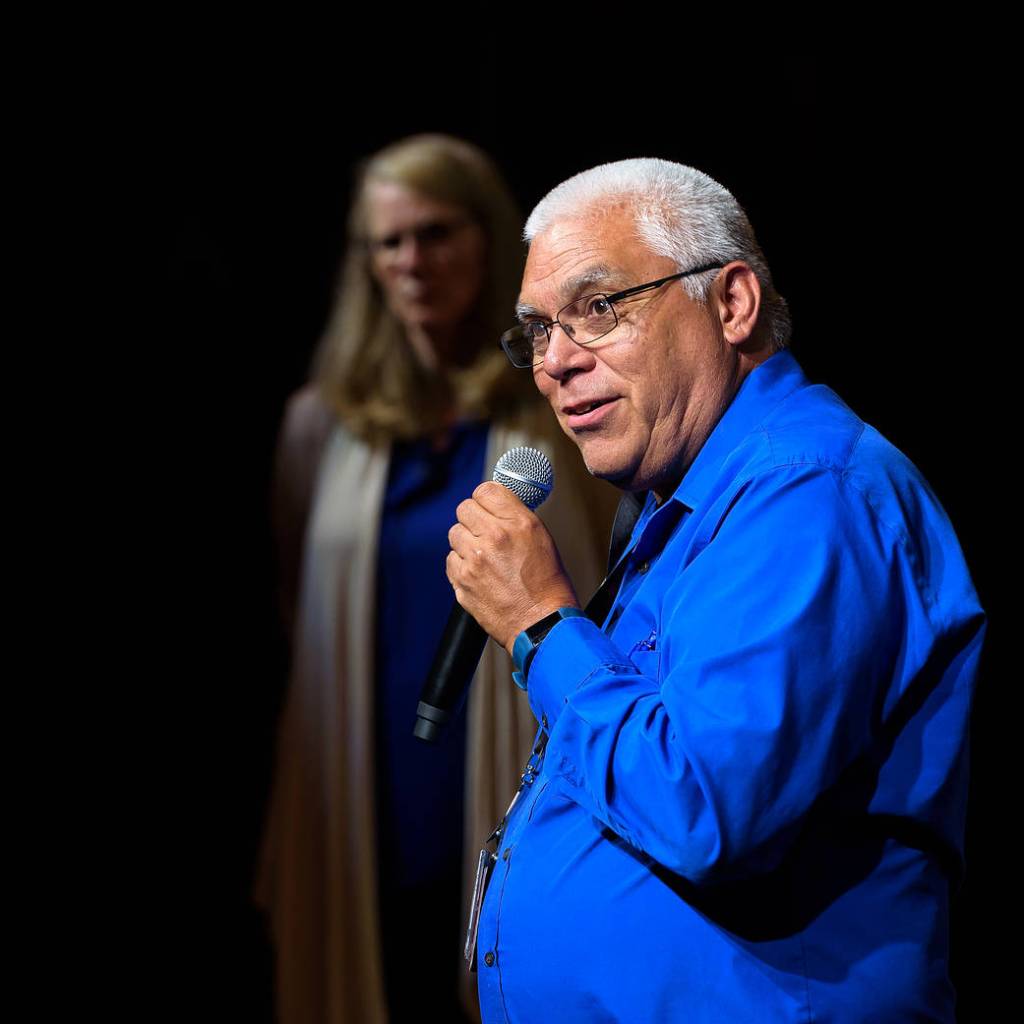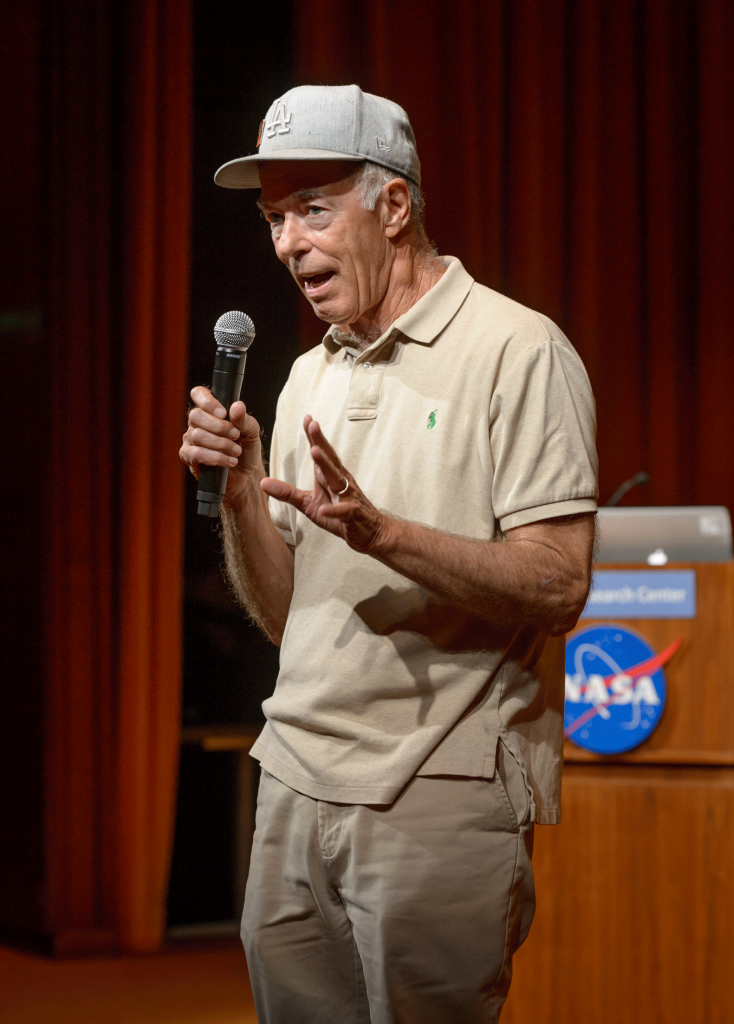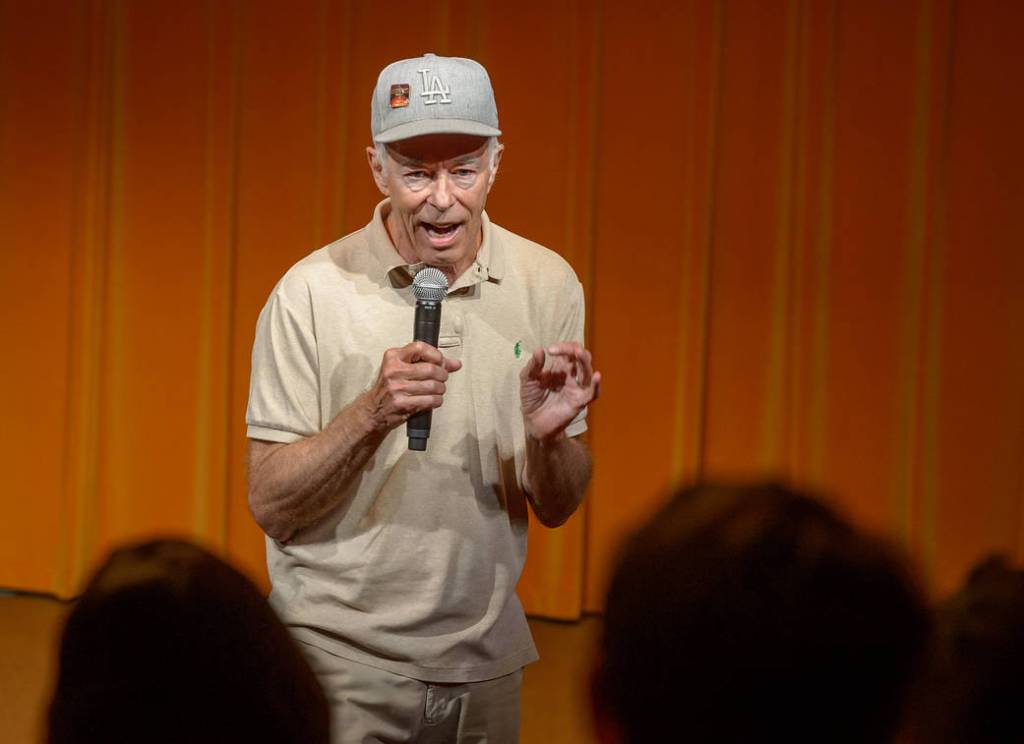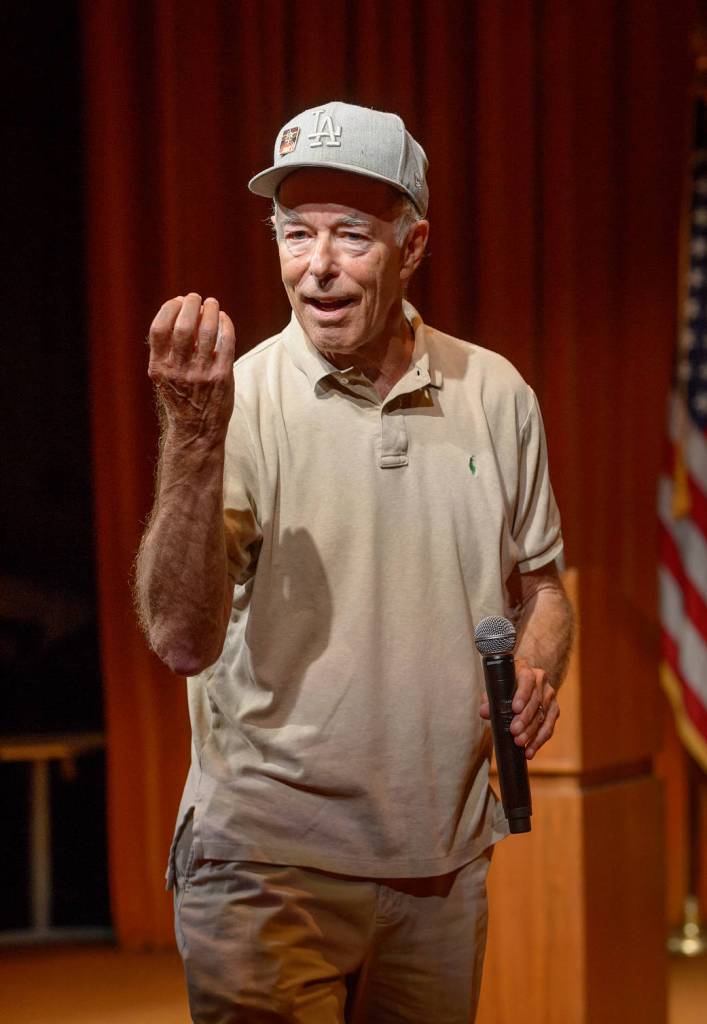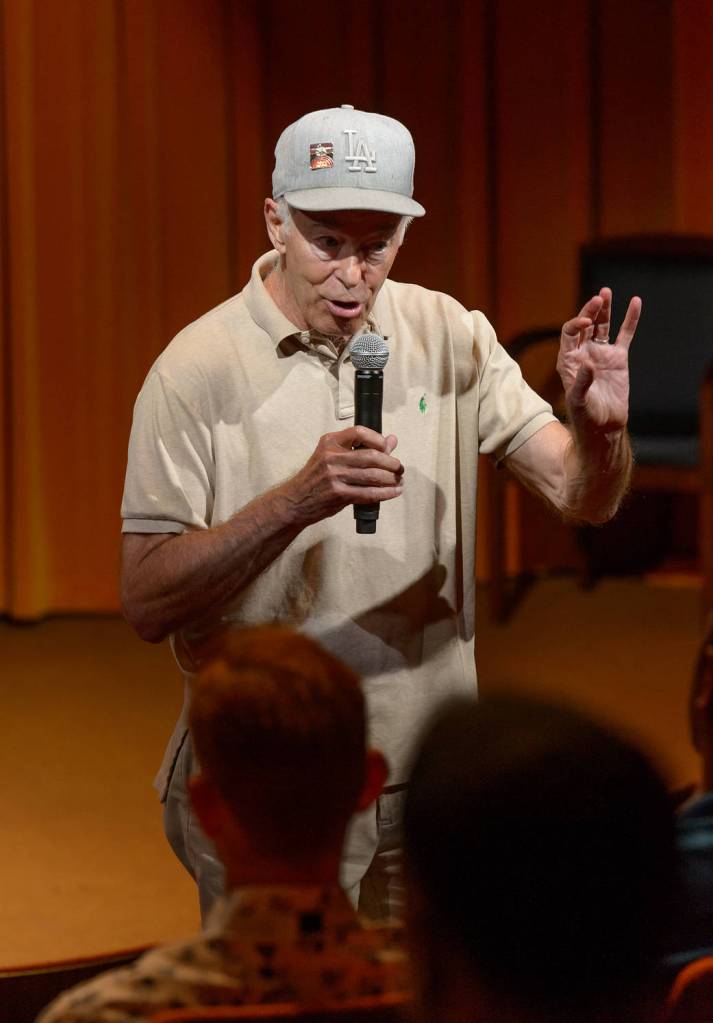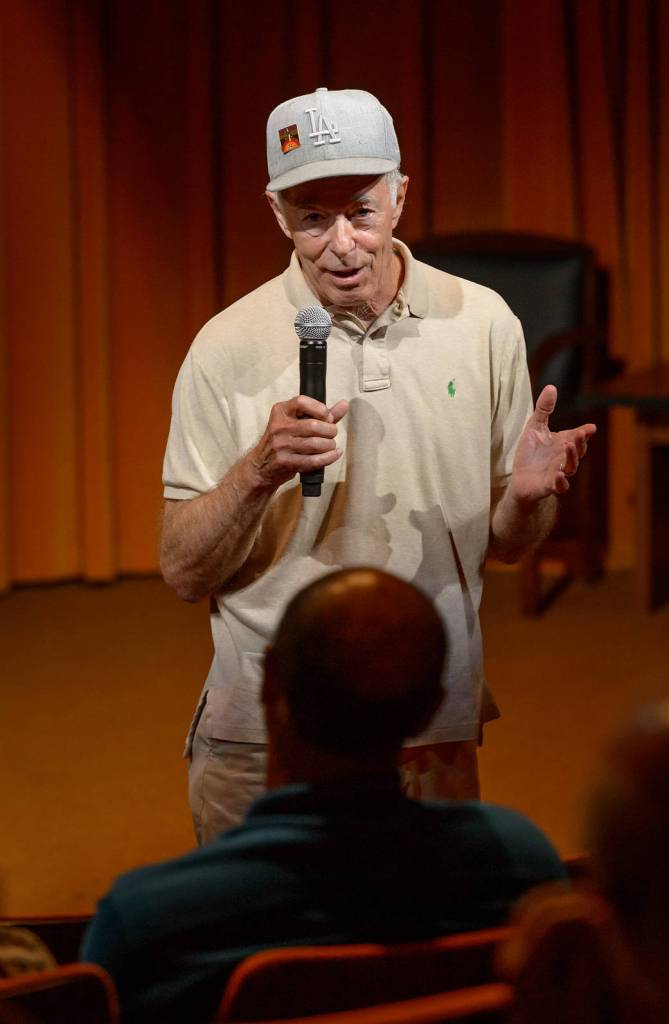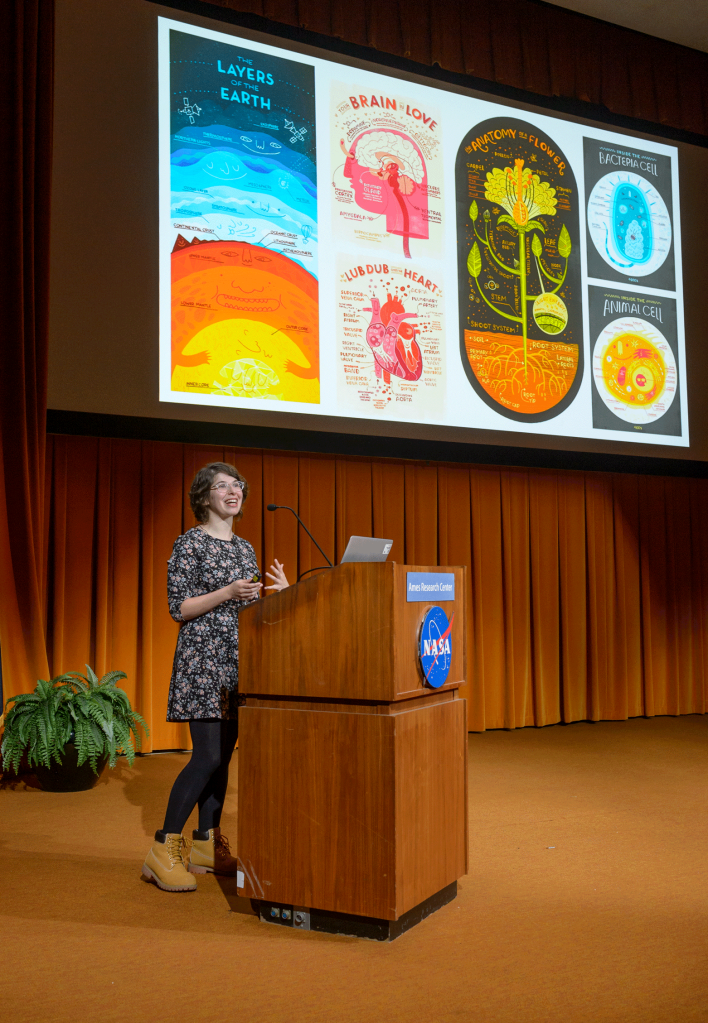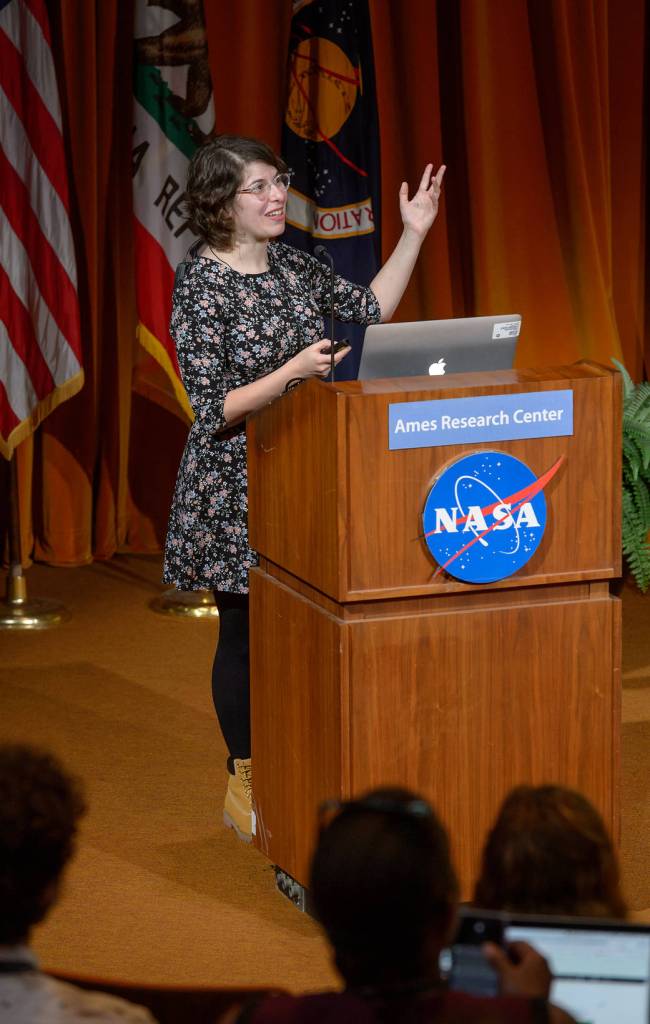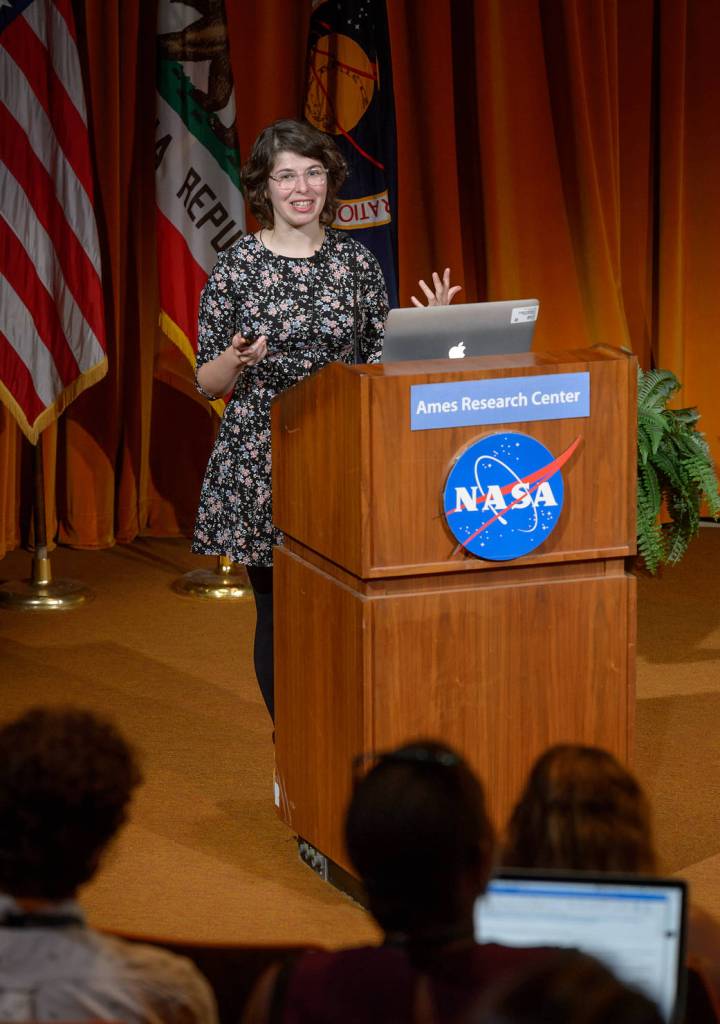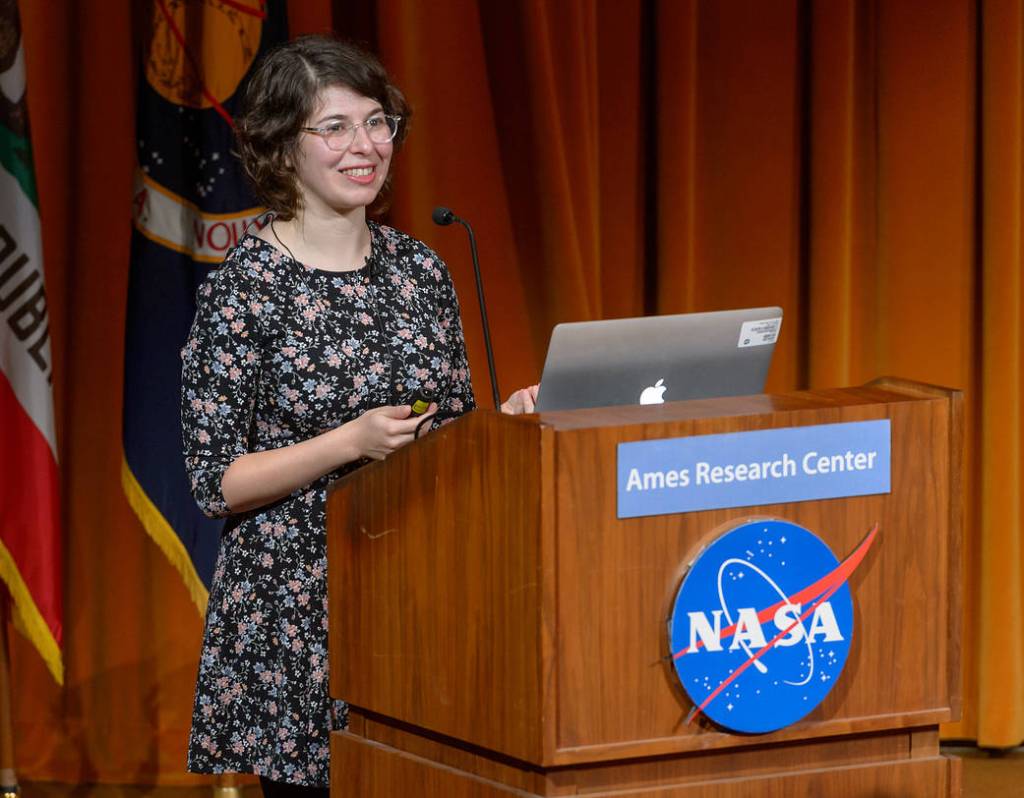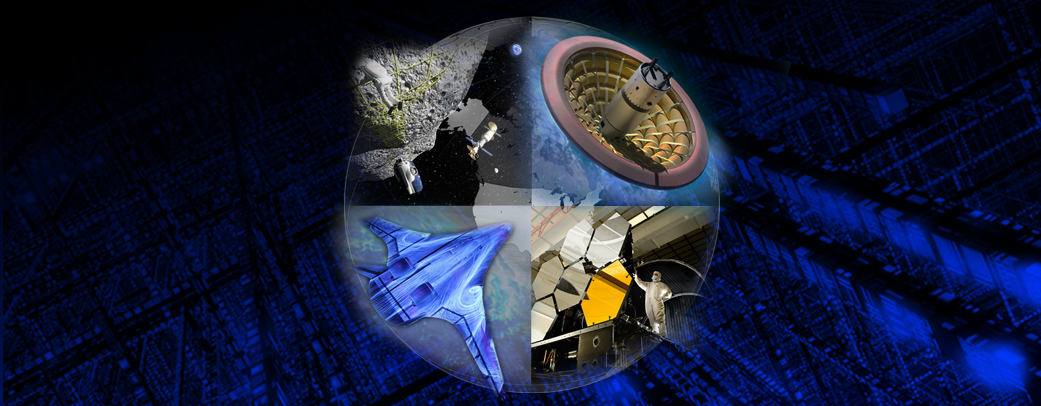2019 Summer Seminar Series
The Office of the Chief Scientist is pleased to announce the 2019 NASA Ames Summer Series! The 2019 Series consists of 10 seminars by subject leaders internal and external to NASA and span multiple subject areas including science, technology and exploration.
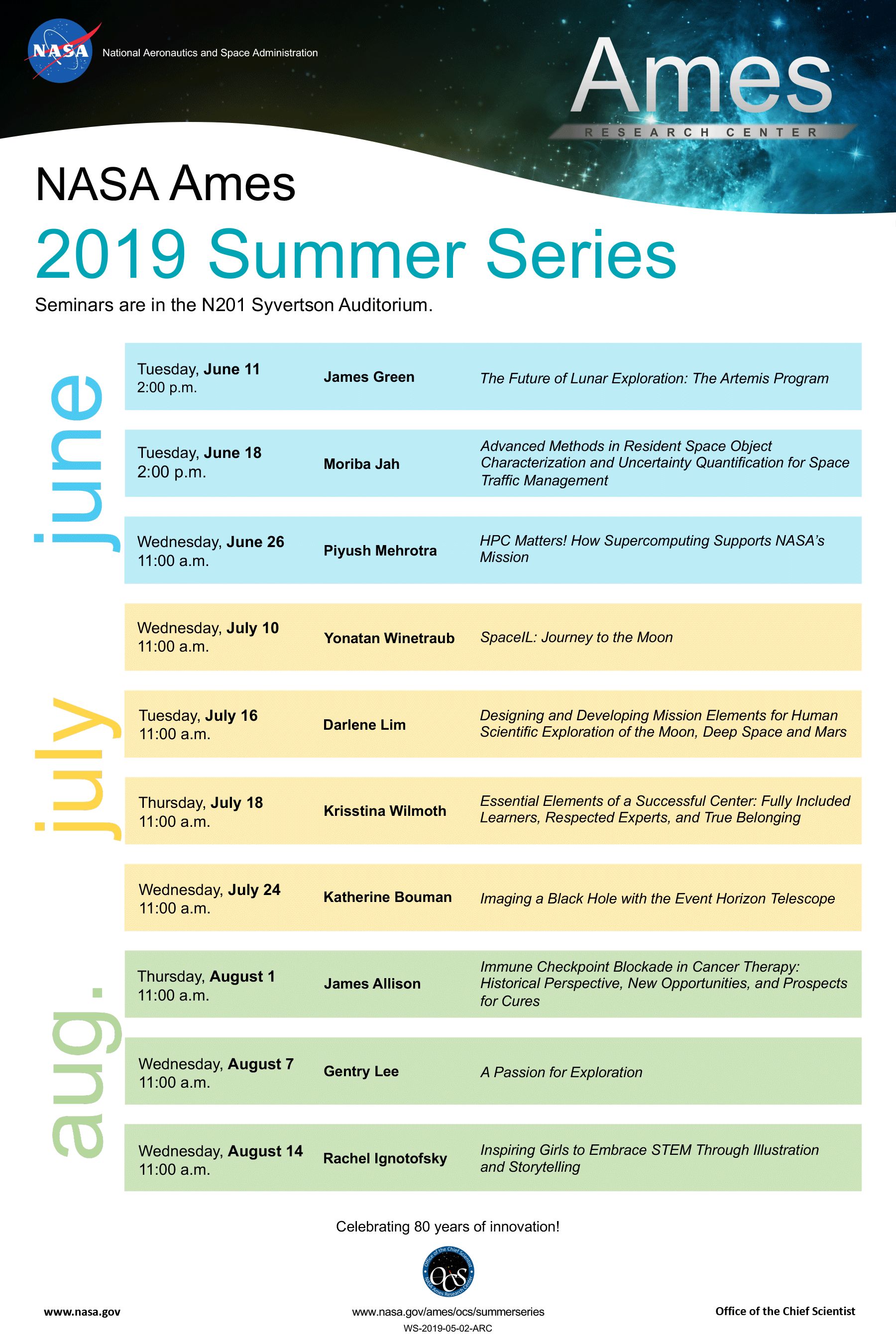 |
James Green
The Future of Lunar Exploration: The Artemis Program
We are going back to the Moon! This time, we are going to stay and develop our mission to Mars. This will be an opportunity for NASA to test essential technologies for space exploration and enable a wide variety of research. Please join us in welcoming Dr. James Green, the Agency Chief Scientist, and his presentation on the Artemis program.
Abstract:
NASA’s future plan is to go to the Moon to stay and then onto Mars. Scientifically there has been a number of stunning advances in lunar science over the last decade and a realization that going back to the Moon will provide scientists with the opportunity to accomplish transformational science in understanding the origin and evolution of our solar system. From a human exploration perspective going to the Moon provides an opportunity to live and work on a planetary surface and using the Gateway space system will be the next important test-bed for a Mars transportation architecture. This talk will discuss how the Moon provides a natural, yet challenging, environment for our next generation robotic and human explorers.
Biography:
Dr. Jim Green is the NASA Chief Scientist. He received his Ph.D. in Space Physics from the University of Iowa in 1979 and began working at NASA’s Marshall Space Flight Center, where he developed and managed NASA’s first Internet, the Space Physics Analysis Network. His positions at NASA include serving as head of the National Space Science Data Center at Goddard Space Flight Center, Chief of the Space Science Data Operations Office, and Chief of the Science Proposal Support Office. From August 2006 to April 2018, Jim was the Director of the Planetary Science Division at NASA Headquarters. Under his leadership, more than a dozen planetary missions have been successfully executed, including the New Horizons spacecraft flyby of Pluto, the MESSENGER spacecraft to Mercury, the Juno spacecraft to Jupiter, the Grail A and B spacecraft to the Moon, the Dawn spacecraft to Vesta and Ceres, and the landing of the Curiosity rover and the InSight lander on Mars. He has written over 115 scientific articles in refereed journals about Earth and planetary science and over 50 technical articles on data systems and networks. In 2015 Jim helped coordinate the NASA involvement with the film “The Martian.”
Moriba Jah
Advanced Methods in Resident Space Object
Orbiting satellites and debris can pose a danger to space missions. There are thousands of objects orbiting the Earth at high speeds, representing a dangerous collision threat. In order to avoid such hazards, it is critical to track and estimate the trajectories of these objects. Dr. Moriba Jah will present his research on identifying and tracking these potentially harmful objects.
Abstract:
The US department of defense tracks approximately 26000 resident space objects ranging from the size of a softball to a school bus. From these, roughly 2000 are actively controlled and all else are effectively space garbage. As such, they do not transmit their identities making them more difficult to track. Tracking is understood as both detecting and object and positively identifying it. Most of these objects are measured as point detection (i.e. non-resolved). Astrodynamics is the science that studies motion of resident space objects. There are four field effects driving RSO motion: gravitational, radiative, particulates, and geomagnetic. Of these, only the gravitational field effects are independent of the RSO’s physical characteristics.
The question then is, how do we positively identify all of the RSOs in the population and thus improve our ability to predict their behavior to satisfy a growing need for space safety, security, and sustainability? How do we deal with uncertainty comprised of both randomness and ignorance? Dr. Jah will describe current state of practice, compare this to state of the art, and identify scientific and engineering gaps that are in need of being satisfied. He will also provide a summary of his research program at UT Austin and how this focus area fits into a larger vision of rigorous and comprehensive space situational awareness and space traffic management.
Biography:
Moriba Jah is the director for Computational Astronautical Sciences and Technologies (CAST), a group within the Institute for Computational Engineering and Sciences (ICES) at The University of Texas at Austin. Moriba came to UT Austin by way of the Air Force Research Laboratory and NASA’s Jet Propulsion Laboratory prior to that, where he was a Spacecraft Navigator on a handful of Mars missions.
Moriba is a Fellow of multiple organizations: TED, American Institute of Aeronautics and Astronautics (AIAA), American Astronautical Society (AAS), International Association for the Advancement of Space Safety (IAASS), Royal Astronomical Society (RAS), and the Air Force Research Laboratory (AFRL). He has served on the US delegation to the United Nations Committee On Peaceful Uses of Outer Space (IUN-COPUOS), is an elected Academician of the International Academy of Astronautics (IAA), and has testified to congress on his work as related to SSA and Space Traffic Management. He’s an Associate Editor of the Elsevier Advances in Space Research journal, and serves on multiple committees: IAA Space Debris, AIAA Astrodynamics, IAF Astrodynamics, and IAF Space Security.
Piyush Mehrotra
HPC Matters! How Supercomputing Supports NASA’s Mission
High Performance Computing (HPC) capabilities are critical for big data and complex problem applications. NASA Ames is home to one of the fastest civilian supercomputer in the world, Pleiades. Its computational capacity is essential for advancing NASA’s goals. Dr. Mehrotra, Division Chief of the NASA Advanced Supercomputing, will present the supercomputing resources provided by the Division and how they support the NASA Mission.
Abstract:
In this talk, Dr. Mehrotra will focus on High-Performance Computing (HPC) and how it impacts all aspects of NASA’s Mission-—including aeronautics, space exploration, planetary science, heliophysics, astrophysics, and Earth science. He will describe the supercomputing resources and services provided by the NASA Advanced Supercomputing (NAS) Division, here at Ames, that support the entire agency. In addition, Dr. Mehrotra will present examples of large-scale simulations and data analysis projects—along with illuminating visualizations—that have been carried out by scientists and engineers supporting NASA projects and programs.
Biography:
As Division Chief of the NASA Advanced Supercomputing (NAS) Division at Ames Research Center in Silicon Valley, CA, Dr. Piyush Mehrotra oversees the full range of high-performance and advanced computing resources and services for NASA’s premier Supercomputing center. In addition, he manages the Division’s modeling and simulation research and development efforts in aerosciences, risk assessment and materials processing. Dr. Mehrotra obtained his PhD in Computer Science from the University of Virginia and after stints at various research organizations, joined the NAS Division at Ames in 2000 as a Senior Scientist and as a Level III manager in the CICT program. He has over 38 years of R&D experience in parallel and distributed computing, including programming languages, compilers & runtime systems, and characterization and benchmarking of such systems. His recent focus has been on developing an infrastructure to support large-scale data analytics and machine learning. He has published over 120 articles in journals and conferences during his research career.
Yonatan Winetraub
SpaceIL: Journey to the Moon
Space exploration isn’t driven solely by governments anymore. The private industry is increasingly involved in activities in Low Earth Orbit (LEO) and beyond, which will result in increased accessibility and reduced costs. A few months ago, a private company, SpaceIL, was the first non-government entity to reach and orbit the Moon. Yonatan Winetraub, co-founder of SpaceIL, will present this new accomplishment for private space exploration.
Abstract:
The Moon is experiencing a recent resurgence of interest as a growing number of international and private enterprises make plans to orbit or land on the surface for exploration, scientific, and commercial goals. SpaceIL is the first private entity to enter lunar orbit and the first to attempt a landing. As part of its mission, SpaceIL capitalizes on the renewed interest in the Moon to inspire children, promote education and advance scientific exploration. This talk will present some of SpaceIL’s achievements, challenges and technologies, and highlight the lessons learned in starting a private space program.
Biography:
Yonatan Winetraub is co-founder of SpaceIL, a $100M Israeli non-profit organization that attempted to land Beresheet, the first private interplanetary robotic mission, on the Moon on April 11, 2019 making Israel only the 7th nation ever to orbit the moon and reach the lunar surface. A key goal of this mission is to inspire the next generation of space researchers and to promote STEM education and scientific exploration. To date, SpaceIL has reached over 1M children. Yonatan has spoken about space technology and radical shifts in the space industry to audiences all over the world and has been recognized in Forbes Israel 30 under 30 and Globes Israel 40 under 40. Yonatan is currently a PhD candidate and Bio-X Bowes fellow at Stanford in Biophysics studying a method to interpret and intercept cancer cell communication. He is working on developing a device to image cancer cell communication by using Optical Coherence Tomography to detect contrast agents’ small movement in response to ultrasound waves excitation. He hopes to shed light on the communication processes and possibly open the door to new types of cancer treatments. In addition, he was part of the International Space University Program at NASA Ames studying how we can create Martian colonies utilizing shelter and water from Martian lava caves. He has a masters in Electrical Engineering and also studied Computational Neuroscience at Tel Aviv University focusing on how regions in the brain collaborate to create our emotions. He has published many papers in the fields of neuroscience, cancer imaging and aerospace engineering.
Darlene Lim
Designing and Developing Mission Elements for Human Scientific Exploration of the Moon, Deep Space and Mars
We are still in the infancy of human space exploration. While we have mastered Low Earth Orbit Human spaceflight and have been to our closest neighbor, the Moon, we have yet to achieve regular Human expeditions to planetary bodies. NASA is committed to developing the next phase of Human exploration of the Moon and to putting boots on the ground of Mars. Analogs on Earth are critical to prepare for and reduce risk to these missions. These analogs, in part, help inform life support, operations and science requirements. Dr. Darlene Lim will discuss NASA’s multi-year analog programs that conduct field research on Concepts of Operations and the supporting capabilities needed for Human and robotic exploration of the Moon, Mars and beyond.
Abstract:
Analogs are destinations on Earth that allow researchers to approximate operational and/or physical conditions on other planetary bodies and within deep space. Over the past decade, select NASA teams have been conducting geobiological field science studies under simulated deep space and Mars mission conditions. Each of these missions integrate scientific and operational research with the goal to identify concepts of operations (ConOps) and capabilities that will enable and enhance scientific return during human and human-robotic missions to the Moon, into deep space, and on Mars. Working under these simulated mission conditions presents a number of unique challenges that are not encountered during typical scientific field expeditions. However, there are significant benefits to this working model from the perspective of the human space flight and scientific operations research community. Specifically, by applying human (and human-robotic) mission architectures to real field science endeavors, we create a unique operational litmus test for those ConOps and capabilities that have otherwise been vetted under circumstances that did not necessarily demand scientific data return meeting the rigors of peer-review standards. This presentation will focus on the NASA BASALT (Biologic Analog Science Associated with Lava Terrains) research program, and SUBSEA (Systematic Underwater Biogeochemical Science and Exploration Analog) research projects. These are multi-year programs dedicated to conducting field science research with the expressed goal of iteratively developing, implementing, and evaluating concepts of operations (ConOps) and supporting capabilities intended to enable and enhance human and robotic scientific exploration of the Moon, deep space and Mars.
Biography:
Dr. Darlene Lim leads several NASA-funded research programs that are focused on blending field science research with the development of capabilities and concepts for future human spaceflight into deep space and Mars. She is the PI (Principal Investigator) of the NASA-funded SUBSEA, BASALT and Pavilion Lake research programs, and the Deputy PI of the NASA SSERVI FINESSE research program. Darlene has served on a number of NASA MEPAG (Mars Exploration Program Analysis Group) committees and was the MEPAG Goal IV (Prepare for Human Exploration) Co-Chair from 2009-2016. She is also currently serving on the Ocean Exploration Advisory Board (OEAB) for the National Oceanic and Atmospheric Administration (NOAA). Darlene is a passionate promoter of science and exploration education and outreach efforts, and founded the Haven House Family Shelter STEM Explorers’ Speakers Series, which from 2012-2015 enabled NASA and academic researchers to conduct educational sessions with homeless children in the San Francisco Bay Area. Darlene has spent 25 years conducting field research around the world, in both the Arctic and Antarctic, as well as in underwater environments where she has piloted submersibles as a scientist and explorer. Darlene majored in Biology for her undergraduate degree at Queen’s University (Canada), and received her PhD in Geology from the University of Toronto (Canada).
Krisstina Wilmoth
Essential Elements of a Successful Center: Fully Included Learners, Respected Experts, and True Belonging
NASA is a world renowned leader in research, technology and exploration. Our success is due, in part, to our ability to attract, recruit, and inspire the best and brightest. With such a wide range of expertise and experiences, achieving a sense of belonging is critical for effective teamwork. Krisstina Wilmoth, Dean of Students, will discuss the elements of creating a successful environment.
Abstract:
One measure of success is longevity, especially in the fields related to space exploration which often require a multi-generational effort. Here we are 50 years after the Apollo landings, still working on our understanding of the Moon, of our solar system and of our universe. To be successful in these endeavors, we must take advantage of our current experts – of which Ames has many – of our growing technology, which is perhaps best adopted by the young, and of the hearts of everyone here who can contribute or delay our overall efforts simply by whether they feel included and engaged or not.
So, what makes for a successful organization? It comes down to respecting, trusting and investing in our scientists, technologists, and engineers as well as those in mission support roles, giving them the freedom to creatively pursue their ideas and approaches. It comes down to seeking out young people to engage in our work, to learn our technologies and then enhance them, and to bring their enthusiasm and their energy. And finally, it comes down to creating an environment where individuals want to contribute because they know they belong at Ames Research Center. This is not rocket science, but it is the core of a successful organization and an amazing place to work.
Biography:
Krisstina Wilmoth wants to live on a spaceship exploring the Universe with Seven of Nine, the Borg with restored humanity, where species interact in respectful and complimentary ways, and where great food and fine wine can be replicated at any time. In the meantime, she is constantly coming out as an English major at NASA, using good communication and critical thinking skills to help others connect in their attempts to explore the Universe from right here on Earth.
As the Dean of Students for NASA Ames Research Center and the Project Manager for the NASA International Internships, Krisstina works with students and mentors from around the world to find NASA projects of mutual interest. She served as the Executive Officer to the Associate Center Director for 10 years before moving into her current role. Krisstina was a professor with Colorado State University and California State University Fresno before joining NASA in 2001. As the lead for science communication in the burgeoning field of astrobiology, Krisstina is used to extreme and diverse communities in both science disciplines and human nature. She enjoys seeing the possibilities to advance science, technology, and exploration for the benefit of all.
Katie Bouman
Imaging a Black Hole with the Event Horizon Telescope
Last spring, the world saw the first image of a black hole. While black holes were predicted to exist based on Dr. Albert Einstein’s 1916 general theory of relativity, and first discovered in 1971, it’s only through the Event Horizon Telescope collaboration that one was imaged in 2019. Dr. Katie Bouman will present the monumental work that led to the first image of a black hole.
Abstract:
This talk will present the methods and procedures used to produce the first image of a black hole from the Event Horizon Telescope. It has been theorized that a black hole will leave a “shadow” on a background of hot gas. Taking a picture of this black hole shadow could help to address a number of important scientific questions, both on the nature of black holes and the validity of general relativity. Unfortunately, due to its small size, traditional imaging approaches require an Earth-sized radio telescope. In this talk, I discuss techniques we have developed to photograph a black hole using the Event Horizon Telescope, a network of telescopes scattered across the globe. Imaging a black hole’s structure with this computational telescope requires us to reconstruct images from sparse measurements, heavily corrupted by atmospheric error.
Biography:
Katie Bouman is an assistant professor in the Computing and Mathematical Sciences Department at the California Institute of Technology. Before joining Caltech, she was a postdoctoral fellow in the Harvard-Smithsonian Center for Astrophysics. She received her Ph.D. in the Computer Science and Artificial Intelligence Laboratory (CSAIL) at MIT in EECS. Before coming to MIT, she received her bachelor’s degree in Electrical Engineering from the University of Michigan. The focus of her research is on using emerging computational methods to push the boundaries of interdisciplinary imaging.
James Allison
Immune Checkpoint Blockade in Cancer Therapy: Historical Perspective, New Opportunities, and Prospects for Cures
(CANCELED)
Gentry Lee
A Passion for Exploration
Human’s innate need to explore has been critical for our species survival. This trait drove us to explore the continents by foot, cross the oceans by boat, explore the skies by plane, leave our planet by rocket and, one day, explore the greater universe with spacecraft. This drive is fueled by advancements in research and technology, and is the result of the passion of individuals, nations and humanity. Please welcome Gentry Lee as he covers some of the most iconic NASA missions.
Abstract:
Gentry Lee has always found exploration fascinating. As a youth, as he read about the voyages of the early Portuguese explorers or the amazing American journey of Lewis and Clark, Lee knew that for his career he wanted to be engaged in some way with exploration. Fifty-five years ago, he accepted his first position, helping to write a study proposal for what later became the Viking mission to Mars. His life has fulfilled his dream. He has been at the forefront of the exploration of the solar system. Lee has been involved in almost all of the great robotic planetary missions. In this lecture, he will recount, with anecdotes and historical facts, the major events in the development and operational lives of the intrepid spacecraft of the last 50 years, including Viking, Voyager, Galileo, Spirit and Opportunity, Curiosity and Dawn. As a special feature, he will tell the story of the Kepler spacecraft from its inception as an idea to its incredible discoveries that have forever changed our view of planets in the universe.
Biography:
Gentry Lee is Chief Engineer for the Solar System Exploration Directorate at the Jet Propulsion Laboratory (JPL) in Pasadena, California. In that position, Lee is responsible for the engineering integrity of the robotic planetary missions managed by JPL for NASA, including the Juno mission to Jupiter, the Dawn mission to the asteroids Vesta and Ceres, the InSight mission to Mars, and the fantastically successful and popular Curiosity rover mission that landed on Mars in August 2012. Lee was Chief Engineer for the Galileo project from 1977-1988 and, after working in a variety of positions on the Viking project from 1968-76, was Director of Science Analysis and Mission Planning during the Viking operations. He has received several prestigious awards for his engineering work, including the Simon Ramo Medal from the IEEE for “career excellence in engineering,” the Harold Masursky Award from the American Astronomical Society, and NASA’s highest award, the Distinguished Service Medal. From 1976 until 1981, Lee was the late Carl Sagan’s partner in the creation, design, development and implementation of COSMOS, the highly successful science documentary series for television that won several Emmys and the prestigious Peabody Award. Between 1989 and 1994, he co-authored four novels, CRADLE, RAMA II, THE GARDEN OF RAMA and RAMA REVEALED, with revered science fiction grandmaster Arthur C. Clarke. All four books were New York Times bestsellers and were translated into more than 28 languages.
Rachel Ignotofsky
Inspiring Girls to Embrace STEM Through Illustration and Storytelling
Role models play a critical role in inspiring the pursuit of STEM careers. Historically, there has been limited acknowledgement of women’s contributions to science, technology, engineering and mathematics. Rachel Ignotofsky’s research and art into often overlooked female pioneers empowers and educates the next generation. Please join us for Rachel’s presentation on changing this narrative.
Abstract:
Women throughout history have contributed greatly to science, mathematics, and engineering, but have not always received the recognition they deserve. Ignotofsky created Women in Science: 50 Fearless Pioneers Who Changed the World to celebrate these women’s accomplishments while introducing boys and girls to new female role models. This presentation will tell the often unknown stories of amazing female scientists and how each significantly changed their fields, in spite of considerable prejudices. She looks at the statistics showing the gender gap in STEM fields today and explains how representation and narratives can empower young women to follow their passions. Ignotofsky also addresses the process of using illustration to make dense information fun and accessible for her bestselling books.
Biography:
Rachel Ignotofsky is a New York Times Best Selling author and illustrator, based in beautiful Los Angeles. She grew up in New Jersey on a healthy diet of cartoons and pudding. She graduated from Tyler School of Art’s Graphic Design in 2011. Now Rachel works for herself and spends all day and night drawing, writing and learning as much as she can. Rachel is a published author with 10 Speed Press and is always thinking up new ideas. Check out her books The Wondrous Workings of Planet Earth, Women In Science and Women In Sports and Women In Art (to be published September 10th). Her work is inspired by history and science. She believes that illustration is a powerful tool that can make learning exciting. She has a passion for taking dense information and making it fun and accessible. Rachel hopes to use her work to spread her message about scientific literacy and feminism.




























